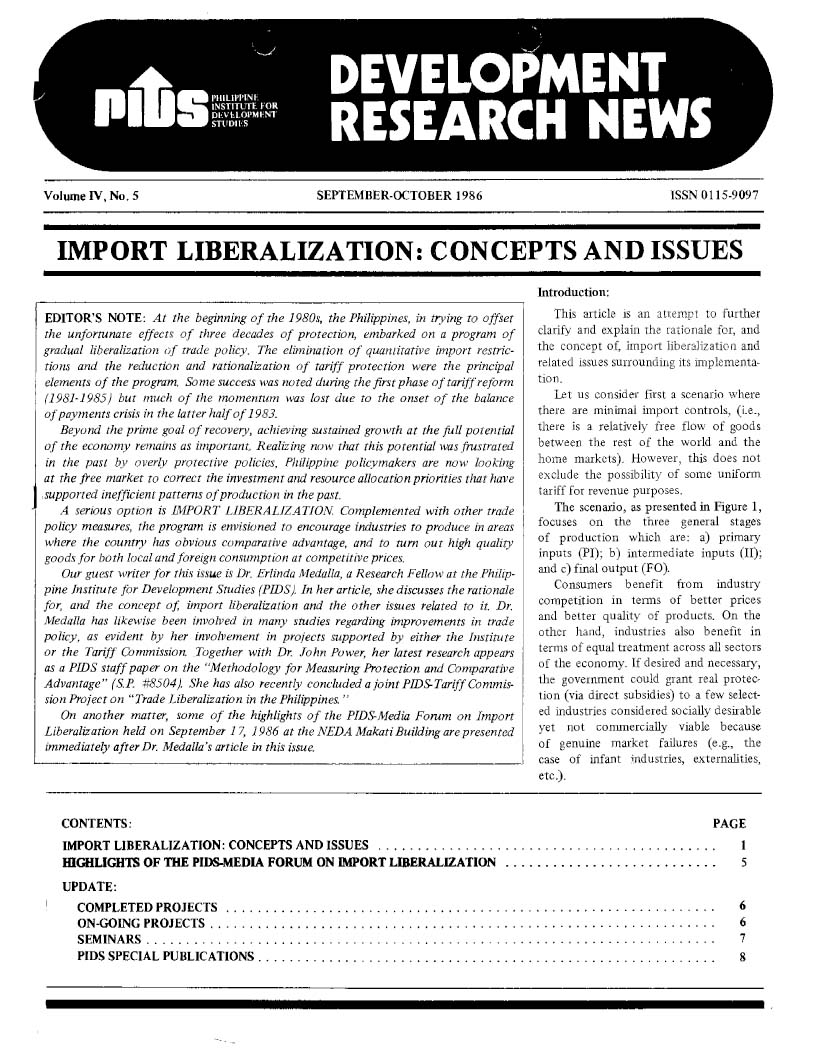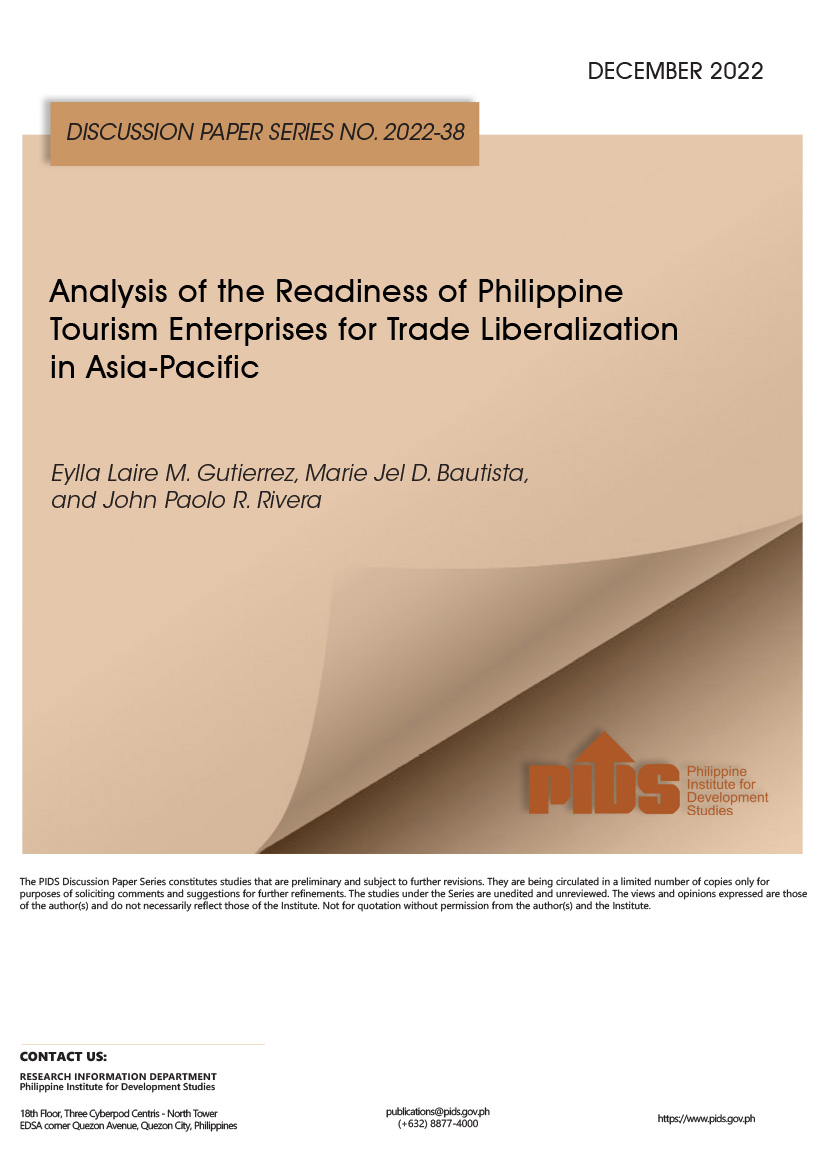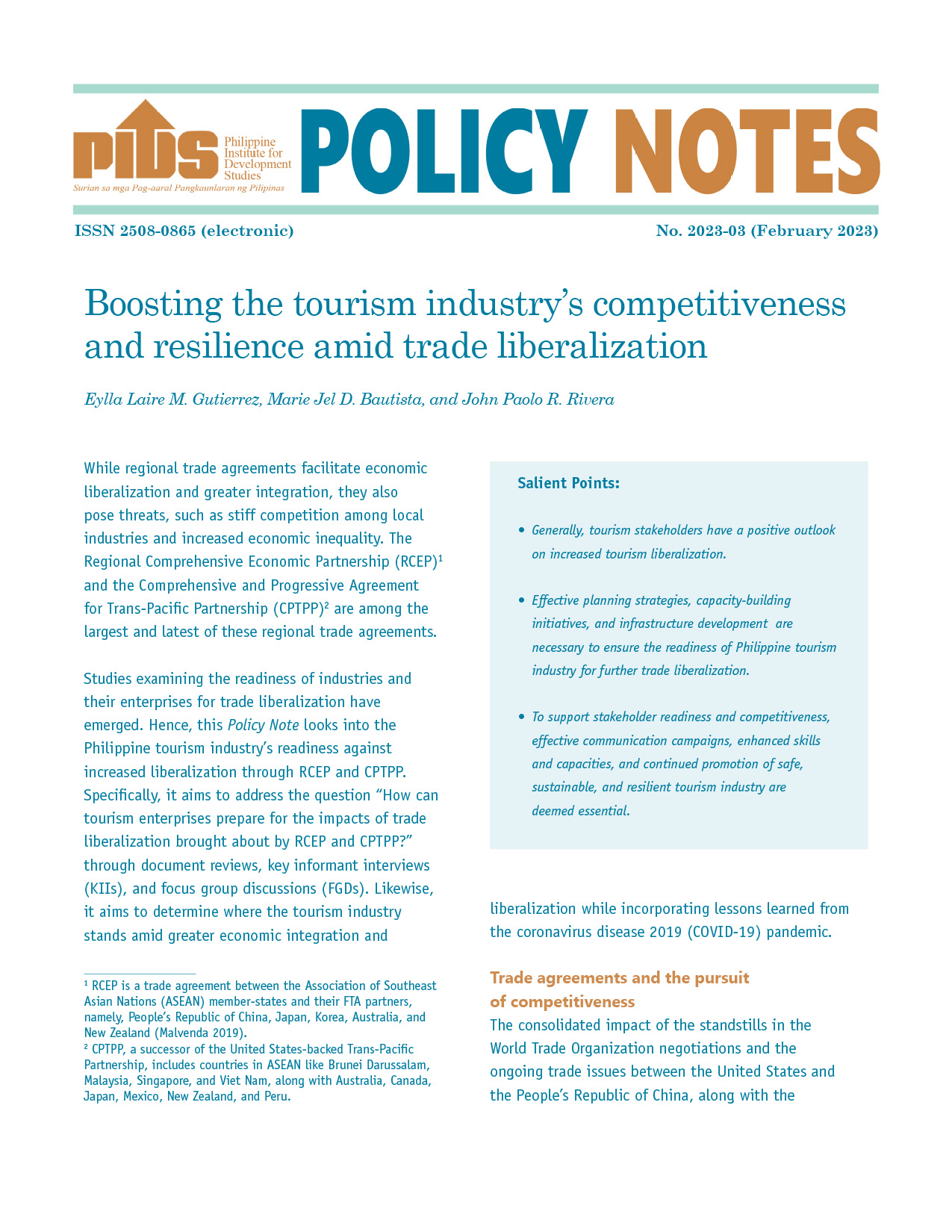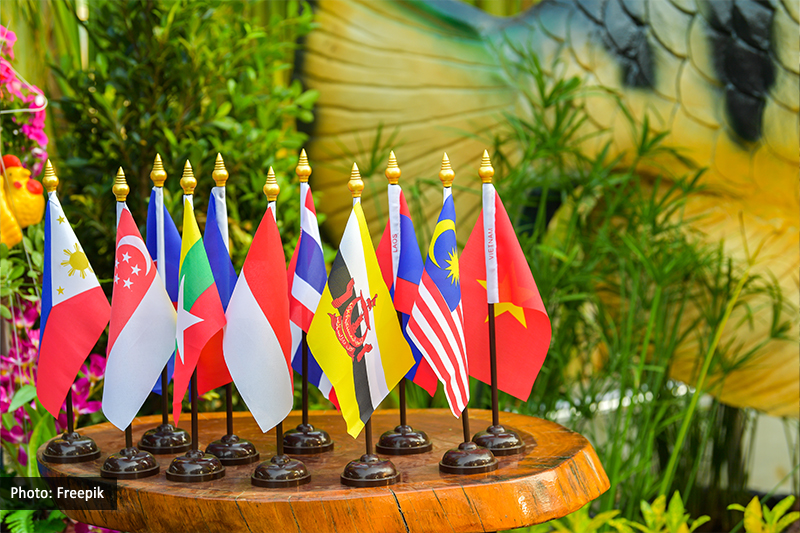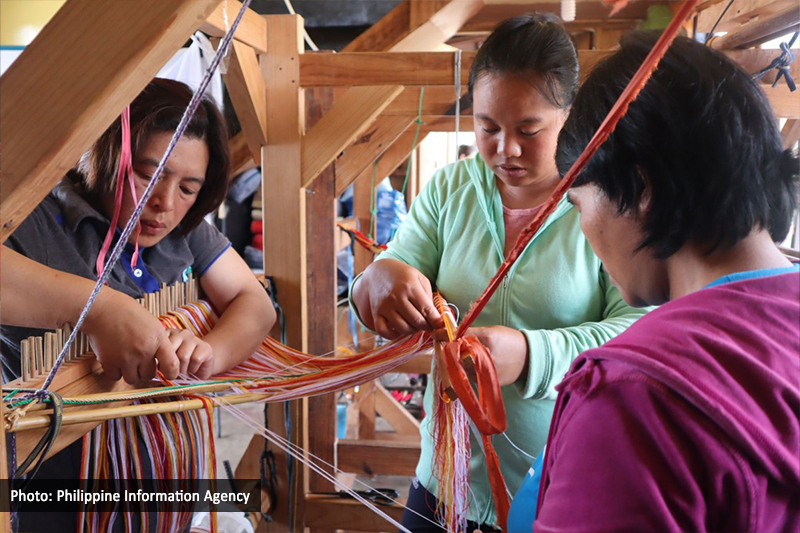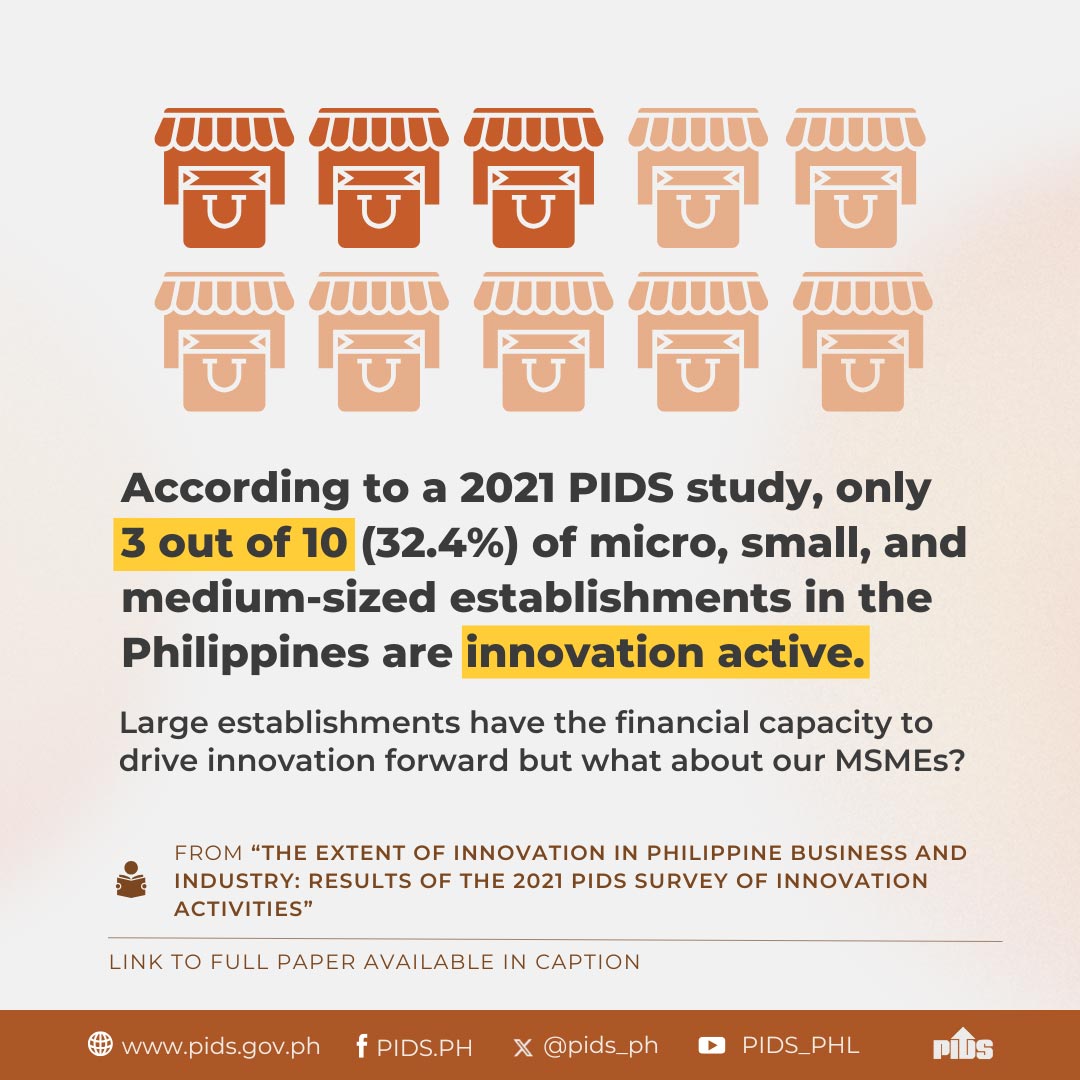At the beginning of the 1980s, the Philippines, in trying to offset the unfortunate effects of three decades of protection, has embarked on a program of gradual liberalization of trade policy. The elimination of quantitative import restrictions and the reduction and rationalization of tariff protection are the principal elements of the program. Some success is noted during the first phase of tariff reform but much of the momentum is lost due to the onset of the balance of payments crisis in the latter of 1983. Beyond the prime goal of recovery, achieving sustained growth at the full potential on the economy remains important. Realizing now that this potential has been frustrated in the past by overly protective policies, import liberalization has become a serious option. Hence, this article discusses not only the rationale for and the concept of, import liberalization but also the related issues surrounding its implementation.

